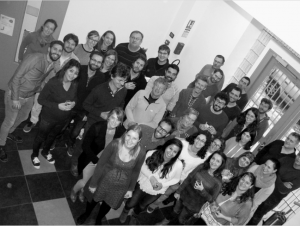Presentation of the unit
Laboratory of Environmental Chemistry (LCE) is a Joint Research Center (UMR7376) affiliated to the Aix-Marseille University and the CNRS (French National Centre for Scientific Research). It is located on the St Charles campus in Marseille, where it has its own building (Building 10) and an antenna on the Arbois campus (Aix-en-Provence).
Scientific activities
 The LCE thematic areas concern (1) the determination of the kinetics and the chemical and photochemical mechanisms of transformation and transfer of contaminants in air, water and soil, and (2) the development of innovative analytical methods for flow and continuous analysis of contaminants in air and water. Fundamental and applied research are carried out in these scientific themes. The aim of fundamental studies is to advance knowledge in the field of environmental analytical chemistry and in the chemical and physico-chemical evolution of contaminants in various environmental compartments (air, water, soil). This knowledge can meet environmental and societal issues such as the management of natural and human ecosystems by improving the monitoring of chemical and environmental quality of the ecosystem and its evolution. This knowledge can also meet the needs of the economic world for the monitoring of water supply and working atmospheres, optimization of manufacturing processes and management of gaseous and/or liquid effluents. This research is often carried out in collaboration with SMEs and/or large industrial groups in many sectors such as microelectronics, petrochemicals, water distribution, etc...
The LCE thematic areas concern (1) the determination of the kinetics and the chemical and photochemical mechanisms of transformation and transfer of contaminants in air, water and soil, and (2) the development of innovative analytical methods for flow and continuous analysis of contaminants in air and water. Fundamental and applied research are carried out in these scientific themes. The aim of fundamental studies is to advance knowledge in the field of environmental analytical chemistry and in the chemical and physico-chemical evolution of contaminants in various environmental compartments (air, water, soil). This knowledge can meet environmental and societal issues such as the management of natural and human ecosystems by improving the monitoring of chemical and environmental quality of the ecosystem and its evolution. This knowledge can also meet the needs of the economic world for the monitoring of water supply and working atmospheres, optimization of manufacturing processes and management of gaseous and/or liquid effluents. This research is often carried out in collaboration with SMEs and/or large industrial groups in many sectors such as microelectronics, petrochemicals, water distribution, etc...
RESEARCH AXIS
The LCE is one of the few laboratories at national and international level to focus on the three compartments of the environment (water, atmosphere and soil). Inter-team collaborations are therefore particularly interesting because they make it possible to study the dynamics of a contaminant simultaneously in several compartments of the environment and thus to carry out an overall assessment of the fate of this contaminant in the environment. To promote interactions and inter-team collaborations, the laboratory has structured itself into three transversal thematic axes :
Axis I "Environmental studies" gathers field studies and focuses on the chemical and microbiological fate of contaminants and their transfer between environmental matrices.
Axis II "Reactivity and Transfer" to study the reactivity of contaminants for the determination of kinetics and reaction mechanisms.
Axis III "Analytical developments" to develop and validate analytical tools (analyzers and passive samplers) and analytical methods for the monitoring of contaminants in the different environmental matrices, giving priority, if possible, to on-line and continuous monitoring methods in order to have a high frequency of measurements.
Structure of the unit
 The LCE is divided into two teams:
The LCE is divided into two teams:
Instrumentation and Atmospheric Reactivity (IRA): this team is composed of 10 FTEs (2 Pr, 4 MCF, 1 DR, 1 IR, and 2 IE). It focuses its scientific activity on the study of the behavior of the aerosol in the troposphere and the consequences of its reactivity on the chemistry of atmospheric systems.
Transfer, Reactivity and Analysis of Micropollutants in the Environment (TRAME): this team is composed of 19 FTEs (4 Pr, 7 MCF, 1 IE, 3AI, 3 TECH, and 1 ADT). The team's activities aim to study the bio-physico-chemical fate of contaminants, to identify the sources of contamination in the environment and to develop the methodological and analytical tools needed to monitor these contaminants.



